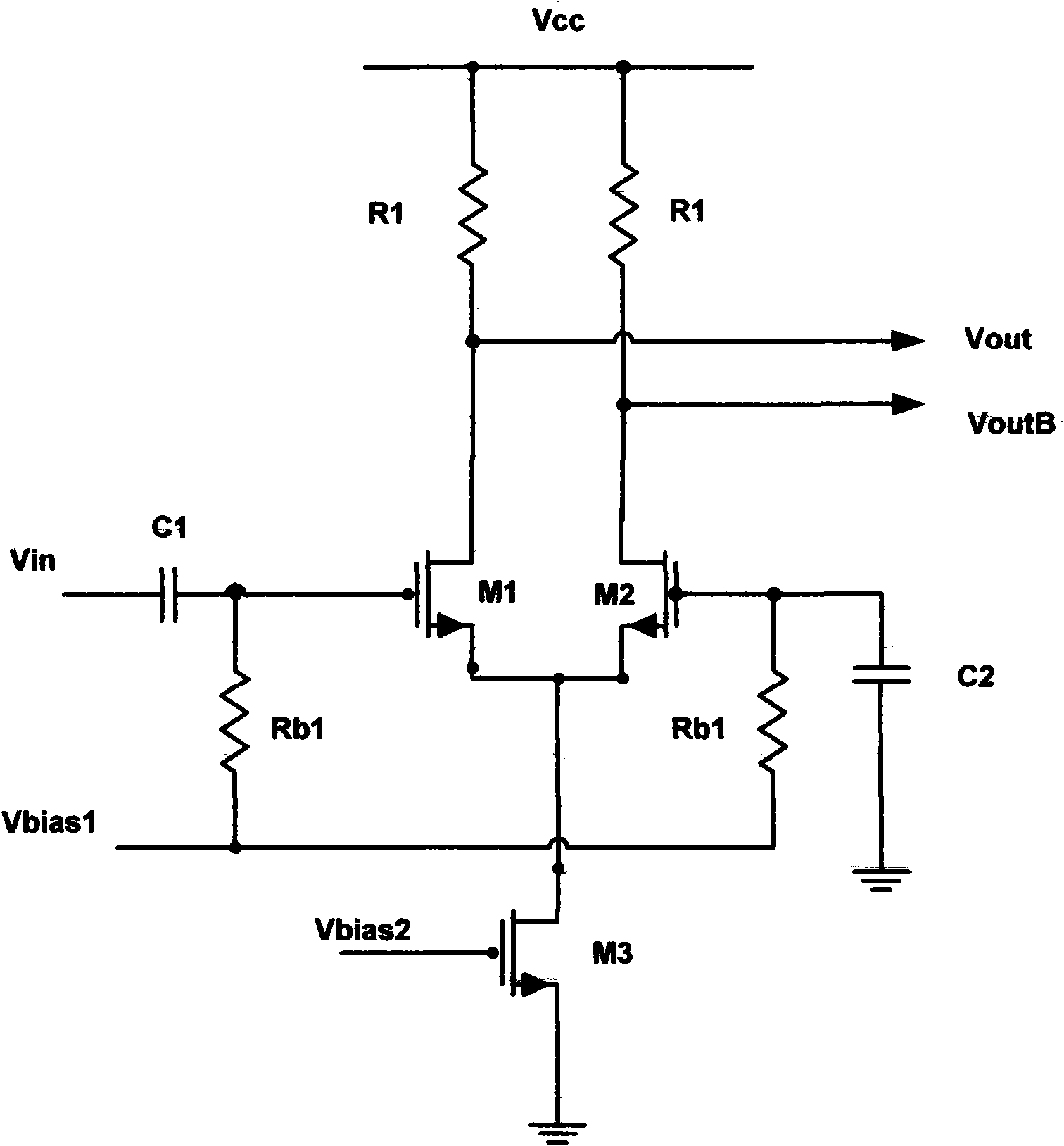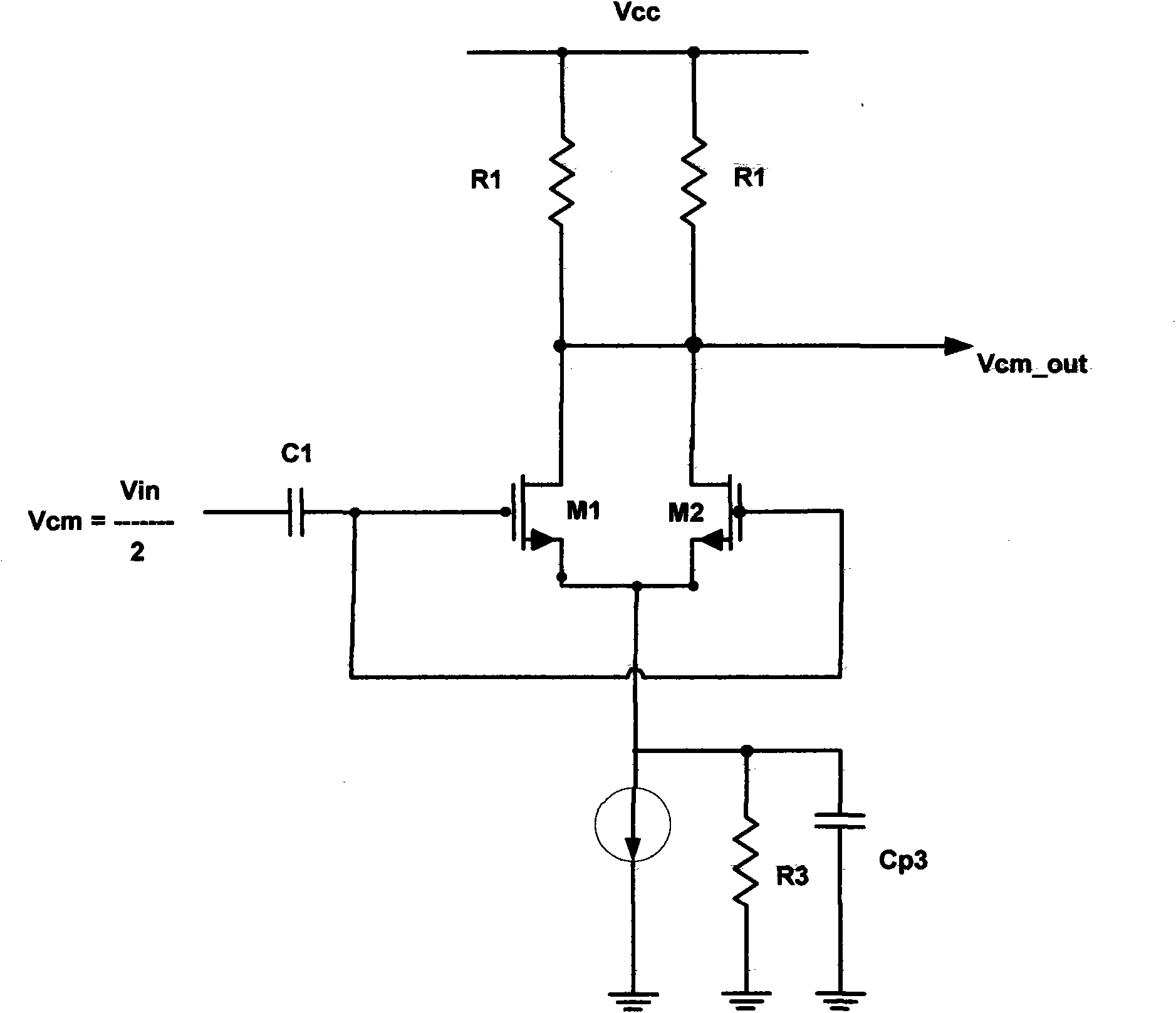High-accuracy complementary metal oxide semiconductor (CMOS) single-end-input to differential-output converter
A single-ended input and differential output technology, which is applied in differential amplifiers, code conversion, analog/digital conversion, etc., can solve the problem of output signal amplitude and phase deviation from differential signals, etc.
- Summary
- Abstract
- Description
- Claims
- Application Information
AI Technical Summary
Problems solved by technology
Method used
Image
Examples
Embodiment Construction
[0013] The invention consists of a load resistor R1, a bias resistor RB1, MOS transistors M1-M8, and a feedback coupling resistor RF. Compare the common-mode output signal of the differential amplifier with a reference common-mode bias voltage. If the common-mode output signal deviates from the reference value, a feedback signal will be generated to adjust the differential amplifier bias current M3 so that the common-mode output returns to the reference value. In this way, the common-mode output signal is effectively controlled. In addition, for differential input signals, the sources of the differential amplifiers M1 and M2 are equivalent to ground, so the feedback loop has no effect on the differential signal. In this way, the present invention effectively converts the single-ended input signal into a differential output signal, and the output differential signal has a phase difference of less than 0.02 degrees and an amplitude difference of less than 0.01 DB.
PUM
 Login to View More
Login to View More Abstract
Description
Claims
Application Information
 Login to View More
Login to View More - R&D
- Intellectual Property
- Life Sciences
- Materials
- Tech Scout
- Unparalleled Data Quality
- Higher Quality Content
- 60% Fewer Hallucinations
Browse by: Latest US Patents, China's latest patents, Technical Efficacy Thesaurus, Application Domain, Technology Topic, Popular Technical Reports.
© 2025 PatSnap. All rights reserved.Legal|Privacy policy|Modern Slavery Act Transparency Statement|Sitemap|About US| Contact US: help@patsnap.com



